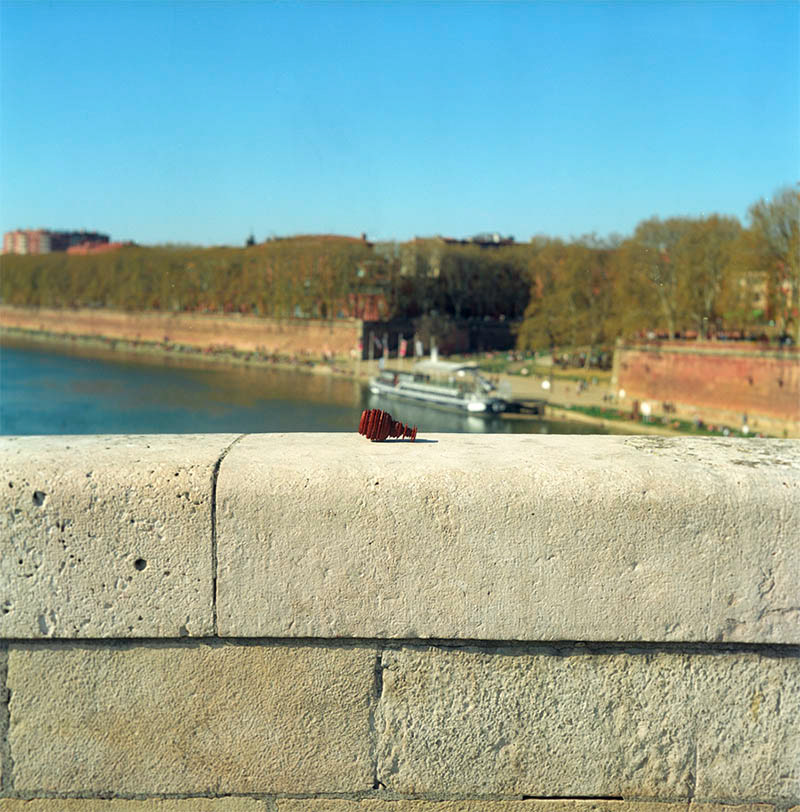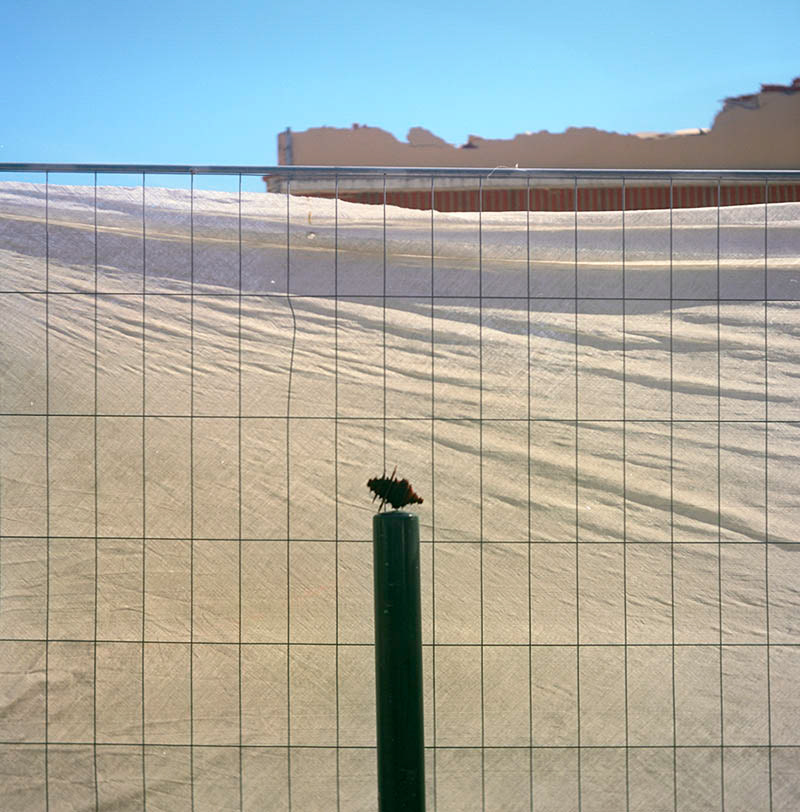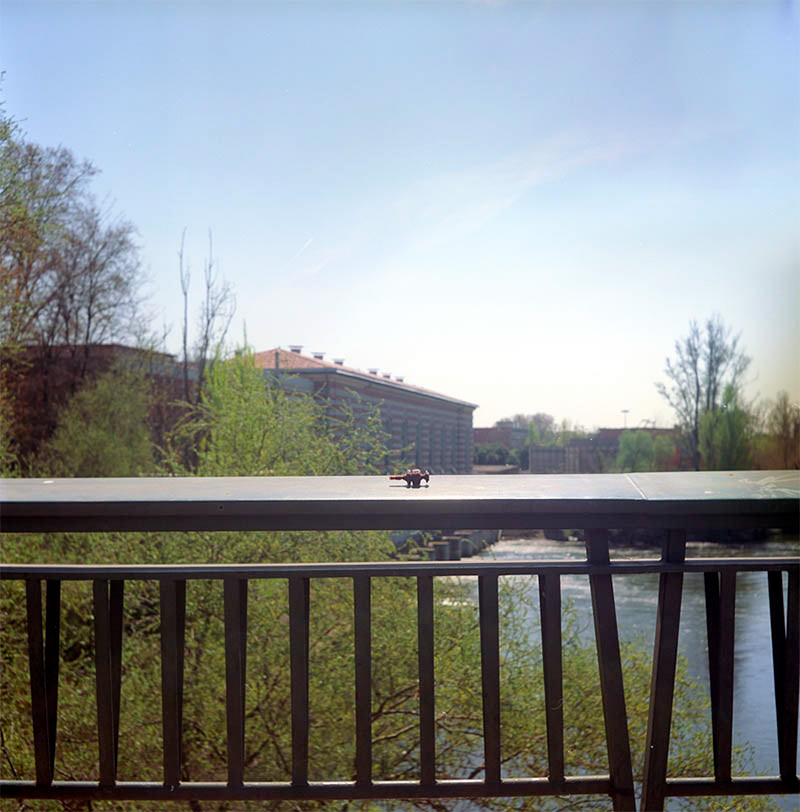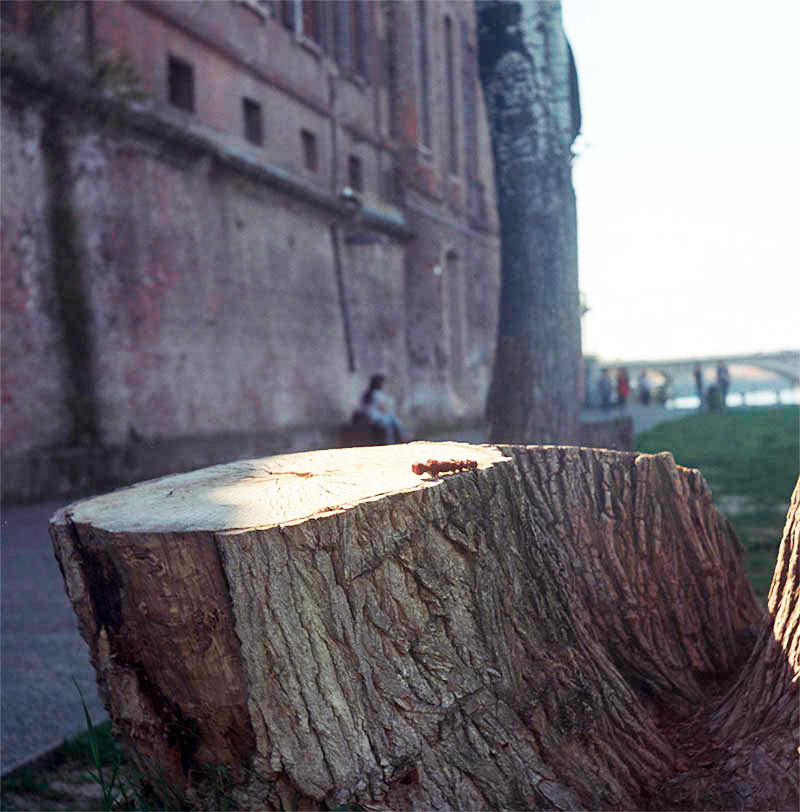August 5, 1993
On August 5, 1993 Joseph Paul Jernigan, a 38-year-old Texas murderer was executed by lethal injection. His body was “donated” to science to be used in med-ical research. The body was sliced in 1871 layers of 1 mm each. This work attempts to recreate the original form of the head utilising A4 sheets printed recto-ver-so assembling a three dimensional object that can be scrolled as a book. The interest is to raise questions in the ethical domain, confronting the spectator with a realistic profile which by simple manipulation re-veals the deepest layers of the human body. The piece transforms a simple medium in a complex almost interactive experience. From dark to light, from evil to science, from death to immortality.
60x30x25cm
Metal, paper, wood, paint, 3D software
Metal, paper, wood, paint, 3D software
2011

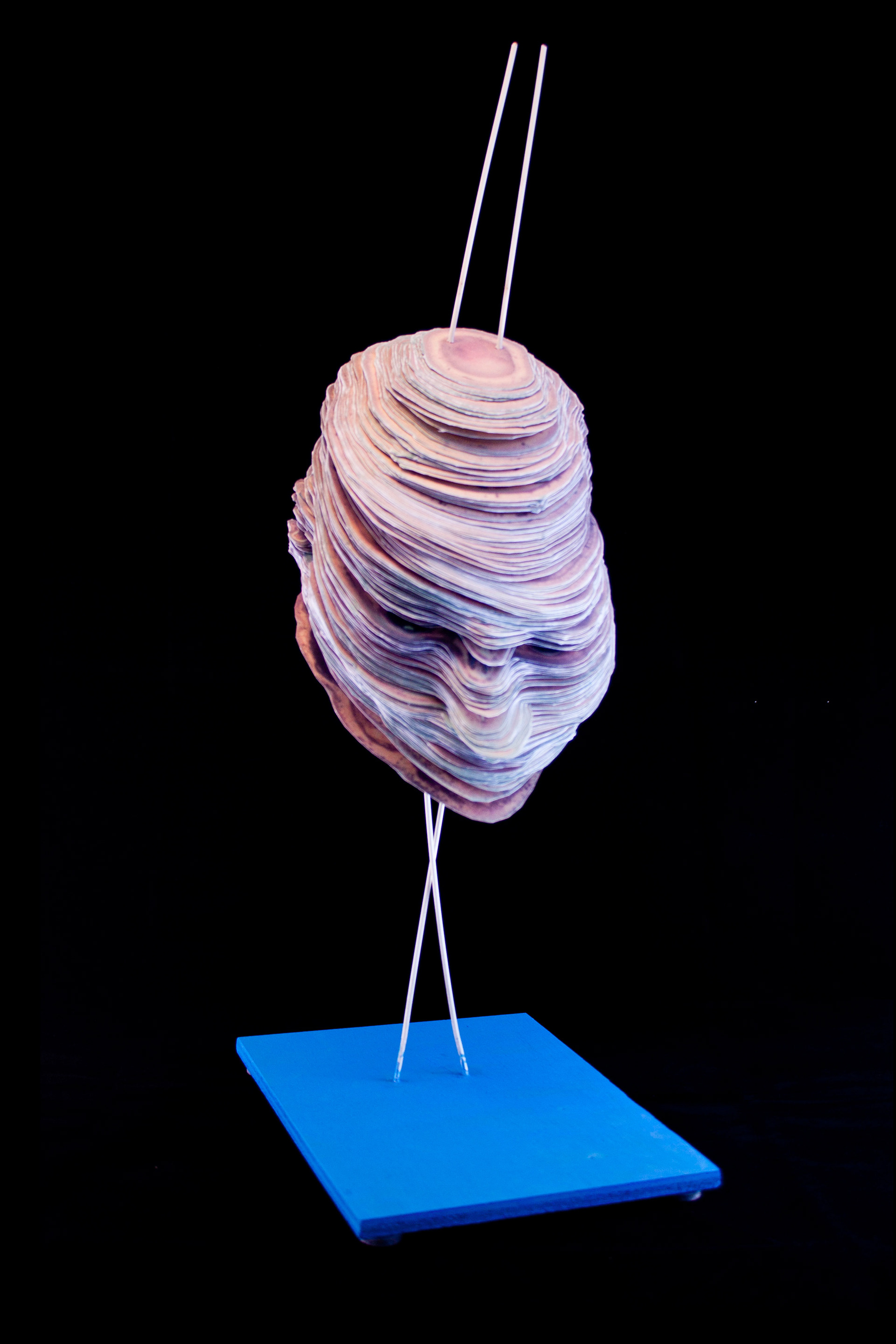


Art-millionaire
The cards have been distributed until now in : Albania,Ecuador, Estonia, France, Spain, Israel, United Kingdom, Italy, Greece.
Extraordinary events do not always require extraordinary causes. Given enough time, they can happen by chance. Leonard Mlodinow
1. Random chance In “Meritocracy”. You can become rich and famous if you work really hard. This creates the illusion that every individual is on the same level and can escalate social ranks very easily. The problem is that “meritocracy” doesn’t make an exception to the rules of random chance. In this system if I work very hard but I cannot achieve anything means that the fault is only mine. * Taking the example of “Monarchy” – Sébastien Bohler (neurobiologist) suggested that we find comfort in this type of government because the random chance is very present. It is not “my” merit if i was born a king, or a servant. (my parents meeting in a particular time frame/place, the one spermatozoid that made it till the egg…)
2. The value of an Artwork . Contemporary living artists sell their works for millions of euros. I pose the following questions: What defines the value of an artwork? - Is it the materials used to produce it? - Is the name of the artist who created, or just conceived it? - Is the idea behind the work? - Does the uniqueness and rarity of the work define its value? - Is the combination of all these factors? - Is it randomness/chance ?
3. Defining an original Artwork - Is the rareness of the “idea” that defines the real value of the work? - Does the artist’s signature or stamp decides what is to be considered original?
Size variable
video series (runtime/format variable) black ink, paper, scratch-able material, hydrogen ballons, glass bottles.
video series (runtime/format variable) black ink, paper, scratch-able material, hydrogen ballons, glass bottles.
2012 – to present
Shaking hands and fake smiles, to high heels and thick ties.
Shaking hands and fake smiles to high heels and thick ties ” questions the role of the artist inside the art system as well as how his public image is perceived by the audience. Is the artist’s role in todays society established by the gallery/museum or by his own status quo reflected into a one-sided mirror sustained by the critics/audience ? In a circle ranging from politics to art, various unnamed elements contribute to achieve ultimately a single product. This product can be reduced to the notion of image. Image is one of the components which sustains a sort of natural selection in those circles. By employing the plural “we”, every artist is placed in the same level including the creator of this work, who takes the courage to reveal what hides behind the curtain. How far can we push the envelope and still get away with it ? Every vernissage of this work is characterised by a performance consisting of several artists wearing a white t-shirt with the word ‘Actor’ printed in black. The font used in the original artwork is composed only by hard minimalistic lines in order to be as direct and straightforward as possible. The cartel (small text) which accompanies the main piece is a sarcastic view of a “formal attire” exposition.
Text by Miza Gallery
Size: 8.40m x 1m
Paper, black adhesive tape, printed t-shirts
Paper, black adhesive tape, printed t-shirts
2013
Toutes les dimanches, surtout les premiers du mois. Une mise en scène montée et jouée par nous même Des espaces presque vides, parfois moitiés pleins Pour faire penser, dialoguer, amuser
et se faire chier ensemble joyeusement!
et se faire chier ensemble joyeusement!
Random Paints Chance
Random Paints Chance is a book written by a random sentence generator.
Only two words: “random” and “chance” were placed in the software and all the rest is written by chance. The software picks random words from a database and compiles them in sentences.
The colour of the cover and the title is also generated haphazardly. The unknown and unpredictable element that causes an event to result in a certain way rather than another, spoken of as a real force.
Only two words: “random” and “chance” were placed in the software and all the rest is written by chance. The software picks random words from a database and compiles them in sentences.
The colour of the cover and the title is also generated haphazardly. The unknown and unpredictable element that causes an event to result in a certain way rather than another, spoken of as a real force.
Printed book (format poche, 70 p), site web,
performance video,
photos
size variable
performance video,
photos
size variable
2013
Eternal Flame
This project explores my major artistic preoccupation which is random chance--the unknown and unpredictable element that causes an event to result in a certain way rather than another, spoken of as a real force.
The pyramid is conceived in a way to serve as a “pure random” generator. It is like a minimalistic multidimensional totem--once activated it has a life of its own--generating different layers of sensorial events ranging from air vibrations(sound) to virtual ripples(white circles). The relation between random chance and radioactive materials is symbiotic. Utilising uranium glass is a deliberate choice for this project, as the visitors are confronted with an unknown force--which has no smell, no sound, and no visible direct effect on them thus it provokes incertitude and angst. Those are the same effects random chance provokes on us. The work makes visible forces that are otherwise invisible.
The pyramid is conceived in a way to serve as a “pure random” generator. It is like a minimalistic multidimensional totem--once activated it has a life of its own--generating different layers of sensorial events ranging from air vibrations(sound) to virtual ripples(white circles). The relation between random chance and radioactive materials is symbiotic. Utilising uranium glass is a deliberate choice for this project, as the visitors are confronted with an unknown force--which has no smell, no sound, and no visible direct effect on them thus it provokes incertitude and angst. Those are the same effects random chance provokes on us. The work makes visible forces that are otherwise invisible.
The flickering of this flame is an event caused by “pure randomness” the events are Independent from each other, the delay between each event, the speed of occurrence and the duration. This produces a “virtual flicker” which is as fascinating as our primordial attachment to fire. The flicker is translated in different events that occur all at the same time:
a white circle is projected from the base of the pyramid which expands like a water ripple.
A booming sound is produced emanating low frequency vibrations that resonate into each visitors body, and a humming sound which in terms is a parasite sound emanated by ionisation of the geiger tube itself.
The work is presented in almost darkness, valorising the colour and light intensity of the radioactive glass-- under the UV light the glass becomes fluorescent. Each projected circle delimits a virtual ambiguous zone in which once entered we are being crossed by tiny Alpha particles propagated by the radioactive decay.
A booming sound is produced emanating low frequency vibrations that resonate into each visitors body, and a humming sound which in terms is a parasite sound emanated by ionisation of the geiger tube itself.
The work is presented in almost darkness, valorising the colour and light intensity of the radioactive glass-- under the UV light the glass becomes fluorescent. Each projected circle delimits a virtual ambiguous zone in which once entered we are being crossed by tiny Alpha particles propagated by the radioactive decay.
pyramid: 1m x 20cm x 5cm diameter of circles: variable Uranium glass, UV Leds, Wood, aluminium, plastic, plexiglass, geiger tube, electric wires, custom electronic circuits, switches, custom software, modified flashlight, sound system, video projector.
2013
Sound Volume
This work throws another point of view, it adds another two external stimuli to sound - vision and touch, transforming sound into a real physical object. Six points of interest were chosen in a predetermined path, forming a varied soundscape which at the same time moulds the physical objects. This method combines precise choices of places and time, with unpredictable elements of nature. The completed objects were left on the same places they were record-ed. Under each object is placed a QR code, when scanned it sends the visitors to the site where they can hear the sound. The shape and size of each object is defined only by the sound itself (the frequency and amplitude)
Size variable (depending on sound) sound recorder, GPS tracker, photography,
video (1:35m HD color)
3D scripted plugins,
3D printed plastic.
video (1:35m HD color)
3D scripted plugins,
3D printed plastic.
2012
